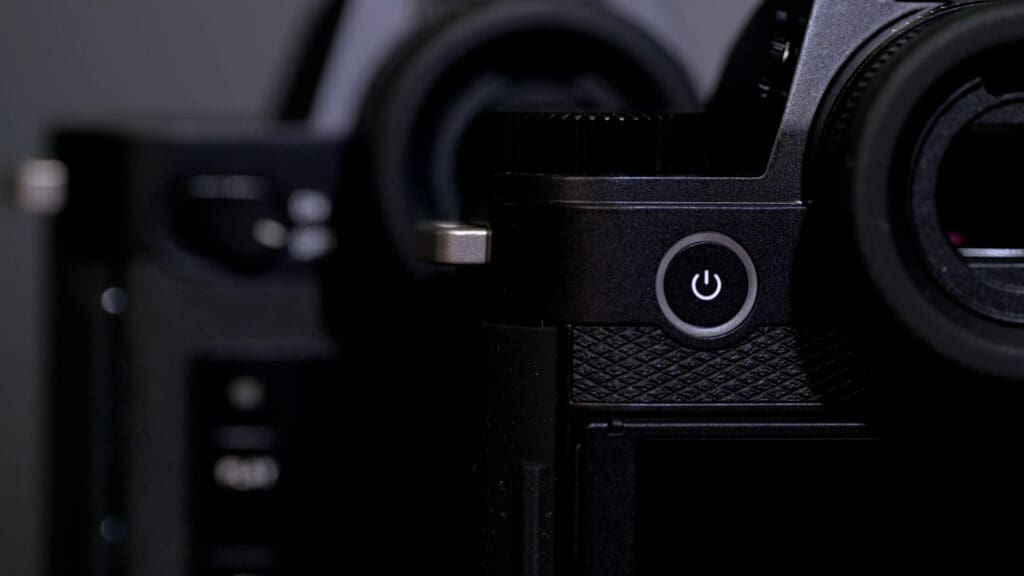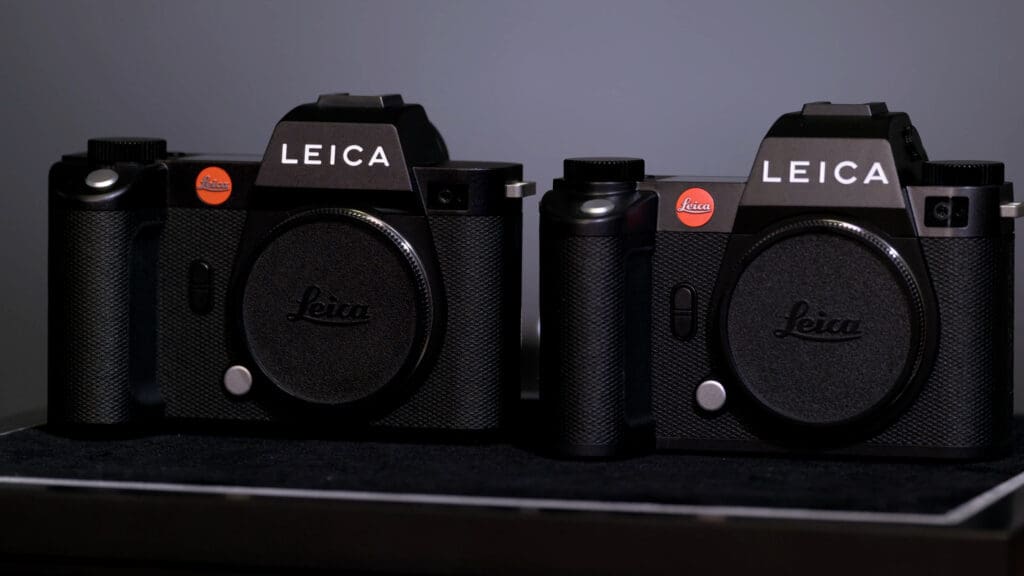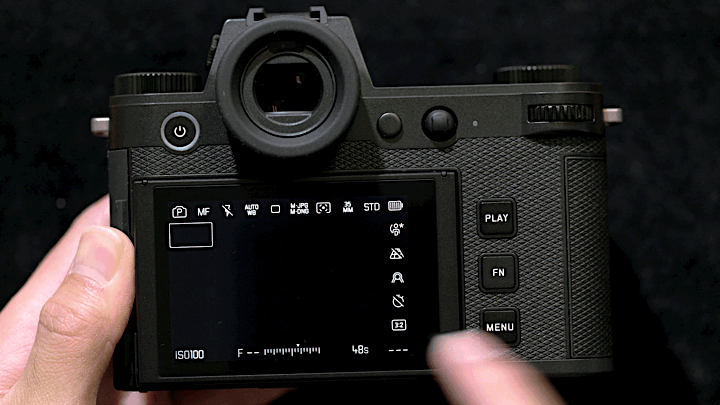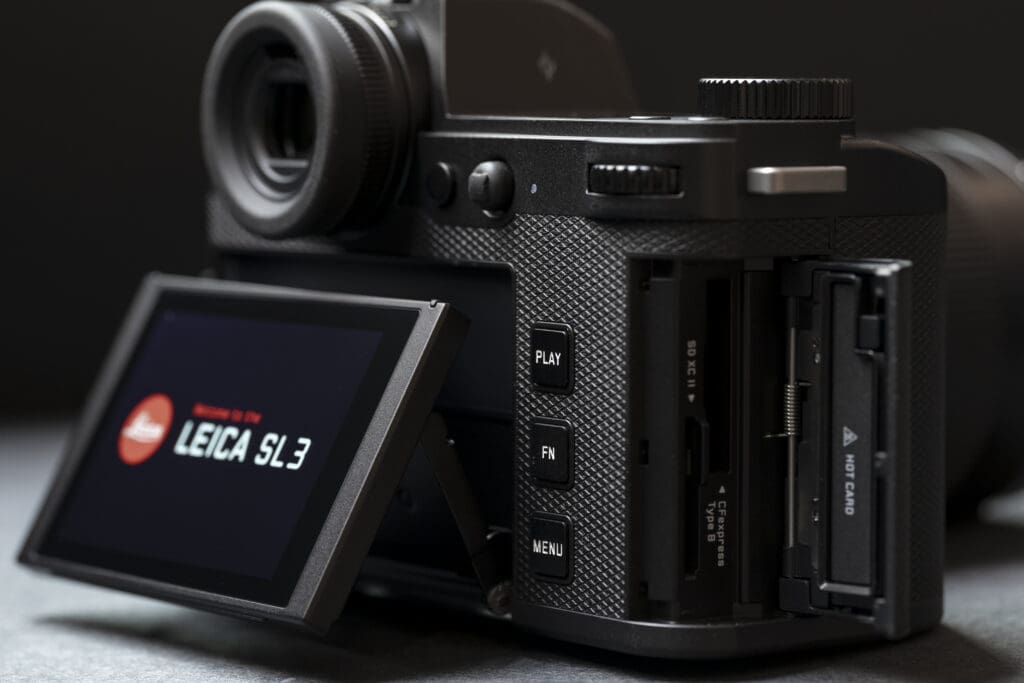The Leica SL 601, introduced over eight years ago in 2015, marked a new chapter for Leica. While the SL 601 remains impressive even today, it signified a shift for the company and a return to an incomplete past venture. The previous venture, the Leica R, failed to succeed amidst the digital crisis and Leica’s financial troubles before the company was purchased by Andreas Kaufmann and underwent a complete overhaul. Despite yielding incredible results, the Leica R8/R9 DMR wasn’t widely accepted due to the lack of autofocus. In many ways, the Leica SL was introduced to overcome challenges that the company hadn’t fully conquered during the Leica R’s era. I’m relieved that Leica persevered, as the Leica SL, now in its third generation, is poised to make the world of photography sit up and take notice.
Approximately ten years ago, the Leica T, now known as the Leica TL, was introduced to the market. It was strikingly different from other cameras available at the time, representing a bold venture into uncharted territory for Leica. Initially, its unique design wasn’t widely understood. However, it has since gained recognition as a cult classic.
The Leica T was the first camera of its kind to put user experience first, with technology coming second. Its higher price point, form factor, and optics might have been drawbacks for those attracted to other cameras with more extensive specs, a wider range of optics, and significantly lower prices. Regardless, Leica had a vision with the Leica T, which seemed to be a beta… maybe even an alpha test. It’s hard not to see the Leica T as the precursor to what we now witness in the new Leica SL3, with its full-fledged user interface and enhanced user experience.
Two years after, the Leica SL 601 was released, it was more widely accepted, though not entirely understood by many. The camera, bulky and over-built in typical German fashion, appealed to some while alienating others. Personally, I love the SL 601. I remember the first time I held it during a visit from our good friends, Ebi and Mary Jo, who were Leica Representatives at the time. I immediately noticed that this camera was distinctively different. Looking through the viewfinder was a unique experience due to the Leica optics and first generation of Leica SL EVF. Additionally, the user experience was the polar opposite of other mirrorless systems at the time. The camera was a robust, straightforward and unwieldily photographic tool, and I loved it.
2015 was exciting for Leica, as they launched the Leica Q 116 and SL 601 just months apart. Little did we know at the time that the Leica Q would become their best-selling camera. The Q 116 was simple, minimalistic, and straightforward, yet powerfully equipped with a full-frame sensor and a 28mm Summilux optic. This allowed it to produce images of remarkable quality for such a small camera.
What does this have to do with the new Leica SL3? I believe it’s deeply related. Leica has incorporated lessons learned from previous generations of cameras – from the Leica T to the Leica SL, and Leica SL – to create the third generation of Leica SL. This camera prioritizes a fluid user experience and high performance, putting picture-taking first and specifications second while keeping digital aspects in the background.
I recently visited Wetzlar, Germany, where I had the opportunity to experience the new Leica SL3 firsthand. In this introductory article, I will share my initial impressions of this new camera, discuss its distinctive features, and compare it to other models. First, however, it’s worth understanding the evolution of this camera over the past decade because Leica is about heritage, about stories, and the tools they make are direct results of said things. Now let’s dive into some of the specifics on the new Leica SL3!
If reading long form articles isn’t your thing I’d highly recommend checking out the video we filmed while in Wetzlar with Carlo, that gives you an excellent overview of the Leica SL3. You can view that video as well as Carlo’s extensive sample gallery from the Leica SL3 here.
Small Details Make a Difference

The new Leica SL3 introduces a slightly altered form factor. While not drastically different, Leica has maintained the general design language of the SL system and made subtle improvements to the camera’s ergonomics. These minor changes, though seemingly insignificant on paper, greatly impact the handling of the camera. Despite the difference being only 5.2mm in length and 3mm in height, I was surprised by how much smaller or ergonomically efficient the Leica SL3 felt in my hand. It’s a tad tricky to describe in writing, but that SL3 fits the hand exceptionally well.
Moreover, the Leica SL3 weighs 762g grams, compared to the SL2’s 838g grams. This noticeable difference is especially apparent when using one of the Summicron-SL ASPH (non APO) lenses or an M lens on the camera. For years, many have desired a Leica Q with an interchangeable lens. While it’s not entirely there, I believe the Leica SL3 is 95% there with its new form, and the added functionality, interchangeable lens mount, added dials, and incredible viewfinder make up for the 5% difference, in my opinion.

I was also pleasantly surprised by the enhanced feel of the buttons. While the SL buttons on both the SL 601 and SL2 felt somewhat “spongy,” the SL3 buttons have a more tactile, satisfying “click” to them. I’m not saying there is really anything wrong with the buttons on the SL2, but the SL3 brings a addition level of refinement even to something so mundane.

Returning to the “Interchangeable lens Q” concept, the Leica SL3, weighing 76g grams less than the SL2 and having a smaller footprint, would be my go-to for regular use with M lenses. I’ve been a long-time M user and love the feel of an M. However, I appreciate the functionality of an SL with longer or faster M lenses. Using a 50mm F1.2 Noctilux on the SL3 felt perfectly natural, and I wouldn’t hesitate to use this combo regularly, thanks to the incredible EVF and improved ergonomics. Alternatively, the 35mm and 50mm f2 Summicron-SL ASPH lenses would be excellent choices for those who prefer these focal lengths over the Leica Q’s 28mm Summilux. The versatility of the Leica SL3 makes the options endless.

The Articulating Screen
Yes, Leica has made the Leica SL3 with the same articulating screen found in the Leica Q3. Some of you might not like this addition, but I’ll tell you after filming for a couple of days in Wetzlar with Carlo that I wish I had this feature on the SL2-S rig we use for video production in-house! This tilting screen is by far the most robust I’ve seen out of all the cameras with tiltable, flippable, rotating screens out there. I believe it is a nice touch and makes the camera just that much easier to use!
A Digital Camera for A Digital Age, but Without the Digital Noise
New UI Touch interface
Let’s revisit the Leica T. This camera was a pioneer, being the first Leica to feature a touchscreen interface. Leica embraced the idea of prioritizing photography over technology to create a device that entirely rethought camera/photographer interaction. Those of us who had the opportunity to use the Leica T recall its stunning, albeit slightly glitchy, touch interface. Looking back, I appreciate Leica’s bold move. I not only owned and loved a Leica T despite its flaws, but it paved the way for the new UI system in the Leica SL3. And I’m here to say, it’s impressive… very, very impressive.
No Need for Menus
The core ethos Leica built into the SL3 UI is the idea of operating the camera using intuitive controls without needing to access the menu. I appreciate being able to press and hold icons on the display to change settings like AF area, ISO, Metering, and more with a simple press & hold. The quick menu remains, but it’s been refined. Now, there are distinct photo and video settings, allowing seamless switching between the two modes. This feature is particularly useful as we shoot more content for our own channels.
Seamless Integration with Leica Fotos
In recent years, Leica has made significant improvements to its Leica Fotos app. Quite frankly, it surpasses all other apps in terms of reliability and user experience. With the Leica SL3, we have Wi-Fi 5 (MIMI) and Bluetooth 5.1, offering faster transfer speeds wirelessly and via USB-C.
I immediately connected the camera to my phone during my first interaction with the SL3 in Wetzlar. Even with beta firmware, it worked seamlessly. I could quickly transfer photos to my iPhone 15 Pro and edit them on the go via Lightroom Mobile faster than ever before. Transferring a handful of DNG’s to my phone only took a few seconds. Easy!
This seamless integration with smartphones is a boon for content creators or anyone who wants to share special moments globally. Personally, I prefer keeping my iPad Pro in my camera bag, connected to the camera via Leica Fotos. This way, I can quickly transfer DNGs from the camera to the iPad Pro, edit in Lightroom, and post directly from the device. This simple, frictionless technology works so well that it doesn’t interfere with photograph-taking.

A Look At The Specs
Sensor Specifications
Leica has moved the sensor on the Leica SL3 to the same sensor as the Leica Q3 and M11. You’ll get a bump over the SL2’s 47.3MP sensor to a 60mp CMOS BSI sensor with triple resolution technology as found on the Q3 and M11 cameras. This is a significant jump. The new sensor enables you to have the best of both worlds, delivering higher-resolution images and incredible low-light performance. Paired with the new Leica Maestro IV with L2 technology and an 8 GB buffer, you get fast and reliable autofocus and quick operation with the same Leica images and files you have come to love.
AutoFocus
Autofocus takes a monumental step forward in the Leica SL3. I’ve been using the Panasonic S5 IIx for quick and easy content creation for a couple months now, and I’ve grown accustomed to the AF system in that camera. From what I can feel, the new SL3 is very similar and uses the same L2 technology as some of Panasonic’s cameras. We finally have Phase Detection AF along with Contrast Detection AF and Object Detection such as people and pets. During my time with the camera I never had an issue with AF. It consistently locked on to what I wanted it to, even in challenging lighting situations. While I did not have the chance to test the AF extensively, my opinion is that it is on par, if not better than the Leica Q3; of course, this will vary depending on the lens you’re using.
IBIS
Leica SL2 and SL2-S, the Leica SL3 feature IBIS. I tested this during the last evening in Wetzlar, taking some moonrise shots over the Factory building and later downtown at the sight of the original 35mm photograph. It works as expected, and you can really get away with a lot when it comes to slow shutter speeds and this new 60mp image sensor.
For Video
Carlo will have more to say about this subject in his first impressions video and an upcoming video on how the SL3 handles. Only a couple hours into using the Leica SL3 we knew that we’d be switching our internal video studio in San Francisco over to the SL3 from the Leica SL2-S as soon as we can. The Leica SL3 is the next evolution in video production, and it extends far beyond just the specs, but the camera is ergonomically just better suited for video. Specs-wise wise you do get ProRes and H.265 codes now and the ability to shoot 8k footage. The new L2 and Maestro-VI processors do a better job at handling larger amounts of data and allow for continuous recording provided you have enough power (you can us the power back adapter) and memory (you can output to an external device or us a CF Express card)
Photo Output Specs
The image quality produced by these new Leica cameras is astounding. They allow for more flexibility than ever before with digital files, including high-ISO, shadow recovery, highlight adjustment, and more. The SL3’s image quality aligns with the M11 and Q3.
One exciting feature of this new sensor, similar to the M11, is the opportunity to use vintage lenses due to the BSI sensor’s handling of light refractions. This means you can use any optic you like on the SL3, basing your choice solely on aesthetic preferences. If you prefer something glowing or airy, use a pre-ASPH summilux like the 35mm Steel Rim. If you want something clinical and precise, use a 35mm APO-Summicron-SL ASPH.

Memory and Storage
Another significant change from the SL2 to the SL3 is the addition of CF Express, and I know many of you are reading this thinking, “UGH! I have to buy a different memory card.” While this may be true, the CF Express Type B card you’ll need for the SL3 will exceed the speed and capabilities of the fastest SD card and offer a great deal more stability. No matter the brand, SD cards are made of cheap, small, fragile memory chips. We have all been there and had a card fail on us. I half expected Leica to add a massive amount of internal storage on the Leica SL3, but instead, they gave you the option to add your own with the CF Express slot. 1TB CF Express Type B cards can now be had for a very respectable price, and you’ll be happy when you have to dump a ton of footage or photos from a trip or shoot onto your computer, and everything is speedier than ever.

A Comparison: SL3 vs. SL2 vs. SL2-S vs. SL 601
| Leica SL3 | Leica SL2 | Leica SL2-S | Leica SL 601 | |
|---|---|---|---|---|
| Sensor | 60mp SMO BIS Sensor + Triple resolution (18, 36,60mp) | 47.3mp CMOS Sensor | 24mp BSI CMOS Sensor | 24mp CMOS Sensor |
| Image Processor | Maestro IV + L2 Technology and 8gb buffer | Maestro III and 4gb of Buffer | Maestro III and 4gb of Buffer | Maestro II and 2gb Buffer |
| AF Systems | Phase & Contrast Based with Object Detect | Contrast Based | Contrast Based | Contrast Based |
| IBIS | Yes | Yes | Yes | No |
| Storage | CF Express Type B + SD UHS II | Dual SD UHS II Slots | Dual SD UHS II Slots | 1x SD UHS II Slot, 1x UHX I Slot |
| Video | FHD, 4k C4k, 8k with MP4, MOV, H.265, and Apple Prores | FHD, 4k, C4k with MP4 or MOV options | FHD, 4k, C4k with MP4 or MOV options | FHD, 4k in MOV or MP4 (recording only in APS-C crop) |
| Photo | Triple Resoltion with 15 stops of DR | 14 Stops of DR | 14.1 Stops of DR | 13.4 Stops of DR (according to DxOMark) |
| Battery | BP-SCL6 2200mAh (backwards compatible with BP-SCL4 with limited features) | BP-SCL4 1860mAh (Forwards compatible with BP-SCL6) | BP-SCL4 1860mAh (Forwards compatible with BP-SCL6) | BP-SCL4 1860mAh (Forwards compatible with BP-SCL6) |
| Wireless Connectivity | Wi-Fi 5 (MIMO) Bluetooth 5.1 & Apple MFI | Wi-Fi 5 / Bluetooth 4.2 | Wi-Fi 5 / Bluetooth 4.2 | Wifi IEEE 802.11 b/g/n |
| Interfaces (Ports) | HDMI 2.1 Type A; USB-C (incl. charging); Audio-Out 3.5 mm/Audio-In 3.5 mm; Timecode Interface | HDMI 2.0b Type A, USB -C, Audio-Out 3.5 mm/Audio-In 3.5 mm | HDMI 2.0b Type A, USB -C, Audio-Out 3.5 mm/Audio-In 3.5 mm | HDMI Type A, USB 3.0, PC Sync, Proprietary interface for Audio, Multifunction port (cable release) |
| ISO | 50-100,000 | 50-50,000 | 50-100,000 | 50-50,000 |
| EVF | Leica EyeRes® , Glass Optics, OLED 0.5″, 5.76 mio. dots, 120 fps | Leica EyeRes® , Glass Optics, OLED 0.5″, 5.76 mio. dots, 120 fps | Leica EyeRes® , Glass Optics, OLED 0.5″, 5.76 mio. dots, 120 fps | Leica EyeRes, Glass Optics, OLED 0.5” 4.4million Dots, 60 fps |
| Display | 3.2“- backlight LED (2.3 mio. dots), touch tiltscreen | 3.2“- backlight LED (2.1 mio. dots) | 3.2“- backlight LED (2.1 mio. dots) | 3” backlight LED (1.04 million dots) |
| Weight (w/o battery) | 762g | 838g | 838g | 847g |
Continuity Across Systems
Leica has achieved something special with this generation of cameras. All modern full-frame Leica cameras, from the Leica M11 & M11-P, to the Leica Q3 and now the SL3, pack the same or similar sensor and image processor. This presents many options for photographers searching for the right Leica system for their needs. Not only does it offer variety for those who need a specific photographic tool, it also ensures continuity for photographers who require more than one tool. In the following, I’ll briefly discuss the SL3 in the context of different Leica users. Expect more content on this topic from various backgrounds and perspectives in the coming days, weeks, and months.
Why should an M user think about an SL3 or any SL?
I’ve been a long-time user of Leica M. It introduced me to the Leica world with the Leica M9 and has remained my constant companion amid all the camera gear changes over the past decade. So, where does the Leica SL3 fit in?
Firstly, if you currently own a Leica M11 or M11-P, the SL3 will seamlessly integrate into your kit. It maintains the consistency of your images’ look and feel. Even without SL lenses, the Leica SL3 is a great addition, as M lenses work extraordinarily well on the SL.
I prefer using my M for 28mm – 50mm lenses, and when I need fast 50mm lenses or longer focal length, I switch to the SL for easier focus. The smaller, more ergonomic form factor of the SL3 is particularly suited to M lenses. Plus, the addition of autofocus on the SL3 is an obvious choice for any M users who need it. As I mentioned earlier, the AF system on the SL3 has been completely revamped for incredibly fast performance.
Why should a Q user think about an SL3 or any SL?
The Q3 essentially embodies the ethos of an “M11 Lite” and the functionality of the “SL3-Lite.” The Leica Q remains a fan-favorite and is Leica’s most popular camera. However, the Q3 provides a glimpse into the potential of the Leica SL3d for those of us who may love the simplicity of the Q but want more options. I am convinced that the SL3 is essentially a more capable Q3 while keeping the same or near the same simplicity as the Leica Q3.
Like the M11, owning a Q3 guarantees consistent image rendering, making the Q3 and SL3 pair well together. For any Q3 users seeking more optical options due to the L-Mount, the SL3 would be their best bet. The inclusion of additional controls, faster image transfer using Leica FOTOS, and an improved EVF make the SL3 a more “professional” option, offering more capabilities and horsepower than the Q3, ideal for those content creators looking to generate content easily or photographers simply looking for the most flexibility in their camera.
Using the SL2 as a backup body?
I want to address a topic that may be of interest to many SL users. We always advocate for well-made, durable tools, and the Leica SL2 is a perfect example. I also think that any “super user” of the SL system could benefit from having an SL2 as a backup. One advantage of recent Leica M, Q, and SL models is that the release of a new model often results in a more attainable option for those needing a second camera or for whom the cost of a new Leica flagship camera is prohibitive. An exciting aspect of the upcoming SL3 is that it makes Leica SL2 cameras more accessible than ever before. With lens options like the 35mm Summicron-SL and 50mm Summicron-SL, plus a variety of excellent lenses from Panasonic and Sigma, entering the world of Leica has never been easier.
Out Take: Ultimately, Who is the Leica SL3 For?
I’ve spent a significant amount of time praising the Leica SL3. As a self-confessed Leicaphile, this might not surprise those familiar with my previous blog posts. However, I believe my praise is justified. The Leica SL3 is for anyone seeking a high-performance mirrorless camera that makes little to no compromises in optics, speed, reliability, or more over… user experience.
Your needs will determine whether the SL3 is the right fit. The Leica Q3 might be sufficient for those who prefer a minimalist approach and primarily use a 28-35mm focal range (using crop modes). Some of you may never venture beyond your M camera, and that’s fine. However, for others, the Leica SL3 makes perfect sense. It’s particularly suitable for content creators who already own a Leica Q3 but require more professional capabilities and a broader range of optics. The connectivity features of the SL3 are a significant benefit. We invest in tools that engage us and enable us to improve our craft. I’ll gladly spend more time riding faster on a bike or sitting comfortably in a quality desk chair because these enhance my daily life and inspire my work in the long run. Investing in a camera that inspires you to create more is an experience work investing in, the same as any other tool that enhances your productivity, creativity, or life in general.
Concerning SL3 pricing. The Leica SL3 on launch is priced at a respectable $6995. Why do I say respectable? At the time of writing this article, The Sony A1 retails at $6580, The Nikon Z9 $5699 and the Canon R3 at $4999 excluding any currently special promotions. All of these are lower than SL3, but keep in mind that they are mass-produced cameras. The Leica SL3 is a handmade camera in Germany. I honestly don’t know how Leica is making money paying real people to put this camera together, producing far lower quantities, and remaining somewhere within the brackets of other high-end, full-frame mirrorless professional cameras. Additionally, The Leica SL3 utilizes the same sensor as the M11-P and includes autofocus and video functionality not found on the M for $2200 less! Again, don’t get me wrong, you’ll never separate me from my M, but that is a pretty incredible feat by Leica.
The SL3 may be outside some people’s price ranges; if you’re in that category, I’m here to tell you that it’s ok! Cameras like the SL3 benefit all of us, regardless of our investment level in the system. As the flagship camera, the SL3 propels the entire L-Mount line further. On its launch, you’ll likely see a surge of pre-owned SL2 & SL2-S cameras on the market at significantly reduced prices. If the SL2 or SL2-S remains out of reach, the price of SL 601 cameras will likely drop even further. Also, Panasonic’s L-mount cameras and lenses offer an attractive entry point to the L-mount system. The SL system and its lenses have legitimized the L-Mount Alliance by providing the most cutting-edge system with an L-Mount. Every L-Mount alliance member has followed suit, making L-Mount cameras and optics even more appealing with the release of the SL3. This is an excitting development for more than just those purchasing a Leica SL3!
Conclusion & Overall Opinion
Overall, I’m very impressed with the Leica SL3. If you’ve read up to here, you already know that. In summary, the Leica SL3 is an evolution but not a revolution of the Leica SL system. The Leica SL3 builds on the already fantastic progress Leica has made with the Leica SL 601 and SL2. With the M system, Leica has established a consistent design language and user ethos throughout the systems. The introduction of the SL3 establishes a new yet parallel ethos and design that is specifically unique to the SL. The speed and fluidity of the user experience I found with the Leica SL3 during our testing in Wetzlar amazed me. Honestly, it’s hard to imagine how Leica will improve on this magic formula in the future, but I’m sure they will, I’m excited to see it, and I’m here for the ride, just as I have been for the last several years!
The Leica SL3 is priced at $6995 and is currently available for pre-order through Camera West Leica Boutiques and Leica Store San Francisco, along with corresponding accessories. We invite you to reach out to us directly with any questions or drop them in the comments below and join the conversation!

Testing the Leica SL3 at Leitz Park!
For a full gallery of sample photos and to learn more about the Leica SL3 be sure to check out our Video from Leitz Park and Carlo’s full gallery of images made using the Leica SL3.
Benjamin Carpenter





